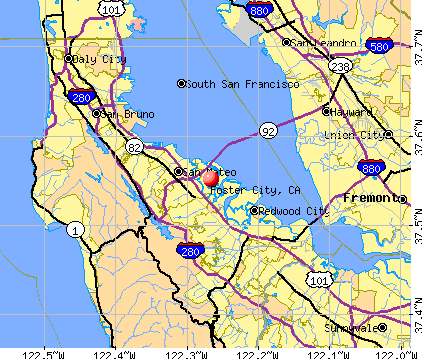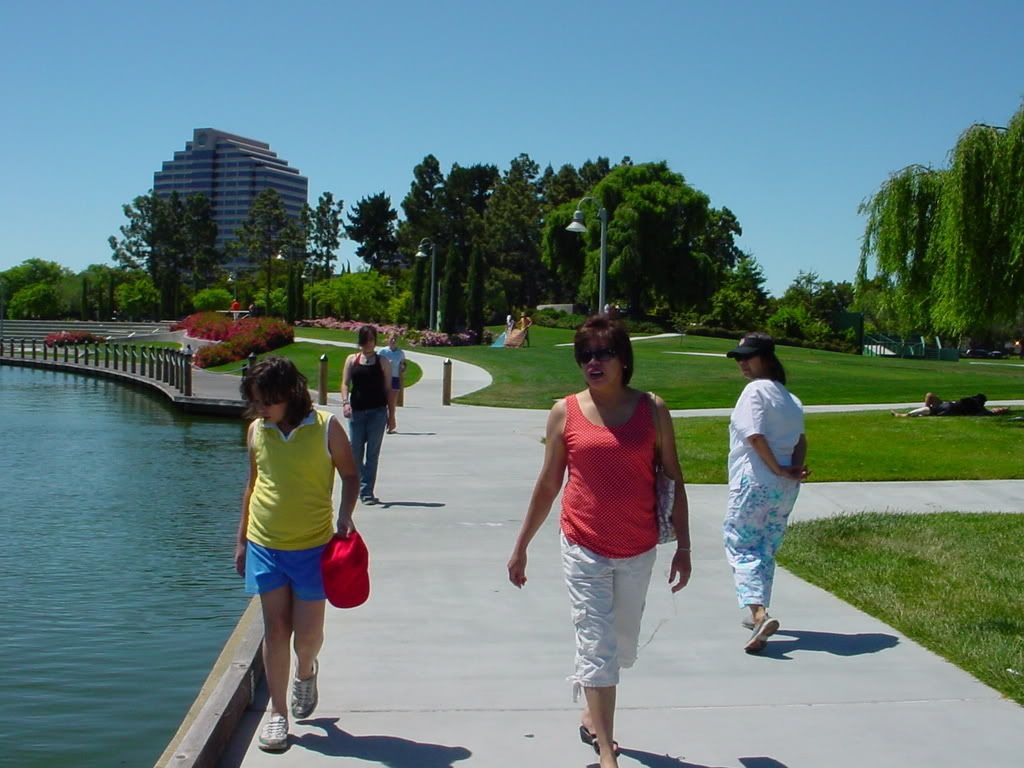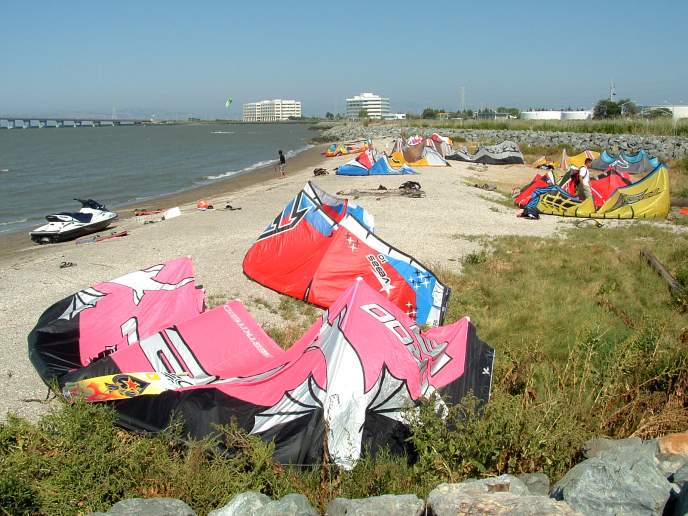
(WO2015031352) PROCESS FOR PREPARING DRONEDARONE AND SALTS THEREOF .
PROCESS FOR PREPARING DRONEDARONE AND SALTS THEREOF (Fri, 06 Mar 2015)
click for more
https://patentscope.wipo.int/search/en/detail.jsf?docId=WO2015031352&recNum=1&docAn=US2014052692&queryString=EN_ALL:nmr%20AND%20PA:(gilead%20sciences)&maxRec=867

| GILEAD SCIENCES, INC. [US/US]; 333 Lakeside Drive Foster City, CA 94404 (US) | |||||||||||
| Inventors: | CHAN, Johann; (US). VITALE, Justin; (US) | ||||||||||
| Agent: | GINAH, Francis O.; (US) | ||||||||||
| Priority Data: |
| ||||||||||
| Title | (EN) PROCESS FOR PREPARING DRONEDARONE AND SALTS THEREOF (FR) PROCÉDÉ DE SYNTHÈSE DE DRONÉDARONE ET DES SELS DE CELLE-CI | ||||||||||
| Abstract: |
(EN)The present disclosure relates to processes for preparing dronedarone or pharmaceutically acceptable salts thereof.
(FR)La présente invention concerne des procédés de synthèse de la dronédarone ou des sels pharmaceutiquement acceptables de celle-ci. |
Atrial fibrillation (AF) is the most prevalent arrhythmia, the incidence of which increases with age. It is estimated that 8% of all people over the age of 80 experience this type of abnormal heart rhythm and AF accounts for one-third of hospital admissions for cardiac rhythm disturbances. Over 2.2 million people are believed to have AF in the Unites States alone. Fuster, et al Circulation 2006 1 14 (7): e257-354. Although atrial fibrillation is often asymptomatic it may cause palpitations or chest pain. Prolonged atrial fibrillation often results in the
development of congestive heart failure and/or stroke. Heart failure develops as the heart attempts to compensate for the reduced cardiac efficiency while stroke may occur when thrombi form in the atria, pass into the blood stream and lodge in the brain. Pulmonary emboli may also develop in this manner.
U.S. Patent No. 5,223, 10 discloses alkylaminoalkyl derivatives of benzofuran, benzothiophene, indole and indolizine, processes for their preparation and compositions containing them. WO 2013/014480 discloses a process for manufacturing dronedarone comprising reduction of the compound of formula (II) to the compound of formula (I) as shown below:

WO 2012/127174 discloses a process involving a Fries rearrangement converting, for example, the compound of formula (8) to the compound of formula (9) followed by coupling of the compound of formula (9) and dibutylamino propyl chloride to afford the compound of formula (I).

(8) (9)
, N(n-Bu)2


European patent application EP2617718A1 discloses processes for preparing dronedarone comprising reacting the intermediate

where L is a leaving group with dibutylaminopropanol.
The above disclosures notwithstanding, there remains a need for alternate or improved processes for preparing dronedarone.
SUMMARY OF THE DISCLOSURE
The present disclosure provides a process for making dronedarone of formula I

or a pharmaceutically acceptable salt thereof, comprising the steps of:
a. reacting the compound of formula (1) with the compound of formula (2) in the presence of a Lewis acid and a suitable solvent to form the compound of formula (3) as shown below:

b. reacting the compound of formula (3) with N-benzylmethanesulfonamide
(MeSC^NHBn) in the presence of a suitable catalyst and a suitable solvent to form the compound of formula (4) as shown below:

c. reacting the compound of formula (4) with dibutylaminopropanol in the presence of a suitable base and a suitable solvent to form the compound of formula (5) as shown below:

(4) (5)
d. reacting the compound of formula (5) with a suitable deprotecting agent to form the compound of formula (I) as shown below:

The present disclosure also provides a process for making dronedarone acid addition salt

the steps of:
a. reacting the compound of formula (1) with the compound of formula (2) in the presence of a Lewis acid and a suitable solvent to form the compound of formula (3) as shown below:


b. reacting the compound of formula (3) with N-benzylmethanesulfonamide (CH3S02NHBn) in the presence of a suitable catalyst and a suitable solvent to form the compound of formula (4) as shown below:

c. reacting the compound of formula (4) with dibutylaminopropanol in the presence of a suitable base and a suitable solvent to form the compound of formula (5) as shown below:

d. reacting the compound of formula (5) with a suitable deprotecting agent to form the compound of formula (I) as shown below:

and
e. reacting the compound of formula (I) with a suitable acid (HA) and a suitable solvent to afford the acid salt of the compound of formula (I) as shown below:

The present disclosure also provides a process for making dronedarone of formula (I)

or a pharmaceutically acceptable salt thereof, comprising the steps of:
a. reacting the compound of formula (1) with the compound of formula (2) in the presence of a Lewis acid and a suitable solvent to form the compound of formula (3) as shown below


b. reacting the compound of formula (3) with Boc-protected methanesulfonamide and a suitable catalyst and a suitable solvent to afford the Boc-protected compound of formula (6) as shown below:

c. reacting compound of formula (6) with dibutylaminopropanol, a suitable base and a suitable solvent to afford the compound of formula (7) as shown below:

d. reacting the compound of formula (7) with a suitable acid and a suitable solvent to afford the compound of formula (I) as shown below:

e. optionally reacting the compound of formula (7) with a sufficient amount of a suitable acid to form the acid salt of the compound of formula (I) as shown below:

One advantage of the present disclosure is that it obviates certain mutagenic impurities observed with the process disclosed in United States patent No. 5,223,510. One of skill in the art is aware by virtue of the present disclosure that other protecting groups may be used in place of the protecting groups (benzyl or Boc) disclosed herein.
An object of the present disclosure is also the provision of intermediate compounds useful for making the compound of formula (I) or salts thereof. Thus, in one embodiment the present disclosure provides a compound of formula (4)


a salt thereof.
In another embodiment the present disclosure provides a compound of formula (6)

(6)
In yet another embodiment, the present disclosure provides a compound of formula (7)

or a salt thereof.

"Droned arone" is described in U.S. Patent 5,223,510. Dronedarone refers to the chemical compound, N-(2-butyl-3-(4-(3-(dibutylamino)propoxy)benzoyl)benzofuran-5-yl)methanesulfonamide. The base form of dronedarone has the following chemical formula:


t


Example 1
/. Friedel Crafts reaction of Compound (1) to provide Compound (3)

To a solution of compound (1) (1 equiv) and 4-fluorobenzoyl chloride (1.2 equiv) in CH2CI2 (10 volumes) at ambient temperature is added A1C13 (0.5 equiv). The reaction is stirred at ambient temperature and then heated under reflux. The reaction mixture is diluted with CH2CI2 (20 volumes) and quenched by the addition of ice-cold water (30 volumes). Following phase separation, the organic phase is dried over Na2S04, filtered and concentrated under reduced pressure. The crude residue is purified by chromatography on silica gel (10 to 50% CH2CI2 in heptane) to provide compound (3). Ή NMR (400 MHz, DMSO-d6) δ ppm 7.82 (dd, J= 8.6, 5.6 Hz, 2H), 7.62 (d, J= 8.6 Hz, 1H) 7.43 - 7.53 (m, 2H), 7.37 (t, J = 8.8 Hz, 2H), 2.72 (t, J= 7.5 Hz, 2H), 1.71 - 1.49 (m, 2H), 1.29 - 1.09 (m, 2H), 0.74 (t, J= 7.3 Hz, 3H); I9F NMR (376 MHz, DMSO-d6) 5 -106.39.
11. Cu-catalyzed sulfonamide coupling of compound (3) to provide compound (4)

(3) (4)
Compound (3) (1 equiv), N-benzylniethane sulfonamide (3 equiv), 2CO3 (3 equiv), Cul (0.5 equiv), acetonitrile (7 volumes) and toluene (7 volumes) are combined and the resulting mixture is sparged with N2. NN'-Dimethylethane-l,2-diamine (10 equiv.) is then added, and the reaction mixture is heated at about 80 °C for about 3 hours. The reaction mixture is cooled to ambient temperature and filtered through a pad of celite. The celite cake is rinsed with acetonitrile (13 volumes) and the filtrate is concentrated under reduced pressure. The residue is dissolved in isopropyl acetate (33 volumes), washed with aqueous HC1 and 20% aqueous NaCl, dried over Na2S04, filtered, and concentrated under reduced pressure. The crude residue is purified by chromatography on silica gel to afford compound (4).
III. Nucleophilic aromatic substitution of compound (4) to provide compound (5)

N-benzyl-N-(2-butyl-3-(4-fluorobenzoyl)benzofuran-5-yl)methanesulfonamide (4, 29.0 mg, 0.06 mmol) was dissolved in NMP (0.5 ml) and the solution was added to a pre-warmed mixture of 3-(dibutylamino)propan-l -ol (33.7 mg, 0.18 mmol) and NaOt-Bu (17.3 mg, 0.18 mmol) in NMP (0.5 ml) at about n60 °C. The resulting reaction mixture was stirred at about 60 °C and the most of starting material (4) was converted by HPLC after 1.5 hours. The in-process sample at about 1.5 hour indicated target molecule (5) formation: LCMS [MH+] : m/z = 647.40, tR = 7.80 min. IV. Conversion of compound (5) to compound (I)

An isopropanol solution of compound (5) (1 equiv) and Pd-C (10 weight %) are agitated under a hydrogen atmosphere (20-45 psig). The catalyst is filtered, and the solution is treated with aqueous HC1 (1.2 equiv). The resulting solids are isolated by filtration to afford compound (I). V. Cu-catalyzed sulfonamide coupling of compound (3) to provide compound (6)

(3) (6)
Compound (3) (1 equiv.), N-boc-methanesulfonamide (3 equiv.), K2CO3 (3 equiv), Cul (0.5 equiv), acetonitrile (7 volumes) and toluene (7 volumes) are combined and the resulting mixture is sparged with N2. N,N'-dimethylethane-l ,2-diamine (10 equiv.) is then added, and the reaction mixture is heated at about 80 °C for about 3 hours. The reaction mixture is cooled to ambient temperature and filtered through a pad of celite. The celite cake is rinsed with acetonitrile (13 volumes) and the filtrate is concentrated under reduced pressure. The residue is dissolved in isopropyl acetate (33 volumes), washed with aqueous HC1 and 20% aqueous NaCl, dried over Na2S04, filtered, and concentrated under reduced pressure. The crude residue is purified by chromatography on silica gel to afford compound (6).
VI. Nucleophilic aromatic substit d (6) to provide compound (7)

(6) (7)
A mixture of dibutylamino propanol (3 equiv), sodium iert-butoxide (3 equiv) and NMP (10 volumes) is heated at about 60 °C under N2 for about 10 minutes. A solution of compound (6) (1 equiv) in NMP (6 volumes) is added dropwise to the reaction mixture over about 3 minutes. The transfer is completed with additional NMP. The reaction mixture is heated at about 60 °C for about 25 minutes, then cooled to about 0 °C and diluted with isopropyl acetate. To the mixture is then added aqueous HQ. Following separation of the phases, the organic layer is washed with water, dried over Na2SC>4, filtered and concentrated. The crude product is purified by chromatography on silica gel to afford compound (7).
VII. Conversion of compound (7) to compound (I)

(7) (I)
An isopropanol solution of compound (7) (1 equiv) is treated with concentrated aqueous HCl
(2.2 equiv). The resulting solids are isolated by filtration to afford compound (1).


Example 1
/. Friedel Crafts reaction of Compound (1) to provide Compound (3)

To a solution of compound (1) (1 equiv) and 4-fluorobenzoyl chloride (1.2 equiv) in CH2CI2 (10 volumes) at ambient temperature is added A1C13 (0.5 equiv). The reaction is stirred at ambient temperature and then heated under reflux. The reaction mixture is diluted with CH2CI2 (20 volumes) and quenched by the addition of ice-cold water (30 volumes). Following phase separation, the organic phase is dried over Na2S04, filtered and concentrated under reduced pressure. The crude residue is purified by chromatography on silica gel (10 to 50% CH2CI2 in heptane) to provide compound (3). Ή NMR (400 MHz, DMSO-d6) δ ppm 7.82 (dd, J= 8.6, 5.6 Hz, 2H), 7.62 (d, J= 8.6 Hz, 1H) 7.43 - 7.53 (m, 2H), 7.37 (t, J = 8.8 Hz, 2H), 2.72 (t, J= 7.5 Hz, 2H), 1.71 - 1.49 (m, 2H), 1.29 - 1.09 (m, 2H), 0.74 (t, J= 7.3 Hz, 3H); I9F NMR (376 MHz, DMSO-d6) 5 -106.39.
11. Cu-catalyzed sulfonamide coupling of compound (3) to provide compound (4)

(3) (4)
Compound (3) (1 equiv), N-benzylniethane sulfonamide (3 equiv), 2CO3 (3 equiv), Cul (0.5 equiv), acetonitrile (7 volumes) and toluene (7 volumes) are combined and the resulting mixture is sparged with N2. NN'-Dimethylethane-l,2-diamine (10 equiv.) is then added, and the reaction mixture is heated at about 80 °C for about 3 hours. The reaction mixture is cooled to ambient temperature and filtered through a pad of celite. The celite cake is rinsed with acetonitrile (13 volumes) and the filtrate is concentrated under reduced pressure. The residue is dissolved in isopropyl acetate (33 volumes), washed with aqueous HC1 and 20% aqueous NaCl, dried over Na2S04, filtered, and concentrated under reduced pressure. The crude residue is purified by chromatography on silica gel to afford compound (4).
III. Nucleophilic aromatic substitution of compound (4) to provide compound (5)

N-benzyl-N-(2-butyl-3-(4-fluorobenzoyl)benzofuran-5-yl)methanesulfonamide (4, 29.0 mg, 0.06 mmol) was dissolved in NMP (0.5 ml) and the solution was added to a pre-warmed mixture of 3-(dibutylamino)propan-l -ol (33.7 mg, 0.18 mmol) and NaOt-Bu (17.3 mg, 0.18 mmol) in NMP (0.5 ml) at about n60 °C. The resulting reaction mixture was stirred at about 60 °C and the most of starting material (4) was converted by HPLC after 1.5 hours. The in-process sample at about 1.5 hour indicated target molecule (5) formation: LCMS [MH+] : m/z = 647.40, tR = 7.80 min. IV. Conversion of compound (5) to compound (I)

An isopropanol solution of compound (5) (1 equiv) and Pd-C (10 weight %) are agitated under a hydrogen atmosphere (20-45 psig). The catalyst is filtered, and the solution is treated with aqueous HC1 (1.2 equiv). The resulting solids are isolated by filtration to afford compound (I). V. Cu-catalyzed sulfonamide coupling of compound (3) to provide compound (6)

(3) (6)
Compound (3) (1 equiv.), N-boc-methanesulfonamide (3 equiv.), K2CO3 (3 equiv), Cul (0.5 equiv), acetonitrile (7 volumes) and toluene (7 volumes) are combined and the resulting mixture is sparged with N2. N,N'-dimethylethane-l ,2-diamine (10 equiv.) is then added, and the reaction mixture is heated at about 80 °C for about 3 hours. The reaction mixture is cooled to ambient temperature and filtered through a pad of celite. The celite cake is rinsed with acetonitrile (13 volumes) and the filtrate is concentrated under reduced pressure. The residue is dissolved in isopropyl acetate (33 volumes), washed with aqueous HC1 and 20% aqueous NaCl, dried over Na2S04, filtered, and concentrated under reduced pressure. The crude residue is purified by chromatography on silica gel to afford compound (6).
VI. Nucleophilic aromatic substit d (6) to provide compound (7)

(6) (7)
A mixture of dibutylamino propanol (3 equiv), sodium iert-butoxide (3 equiv) and NMP (10 volumes) is heated at about 60 °C under N2 for about 10 minutes. A solution of compound (6) (1 equiv) in NMP (6 volumes) is added dropwise to the reaction mixture over about 3 minutes. The transfer is completed with additional NMP. The reaction mixture is heated at about 60 °C for about 25 minutes, then cooled to about 0 °C and diluted with isopropyl acetate. To the mixture is then added aqueous HQ. Following separation of the phases, the organic layer is washed with water, dried over Na2SC>4, filtered and concentrated. The crude product is purified by chromatography on silica gel to afford compound (7).
VII. Conversion of compound (7) to compound (I)

(7) (I)
An isopropanol solution of compound (7) (1 equiv) is treated with concentrated aqueous HCl
(2.2 equiv). The resulting solids are isolated by filtration to afford compound (1).






